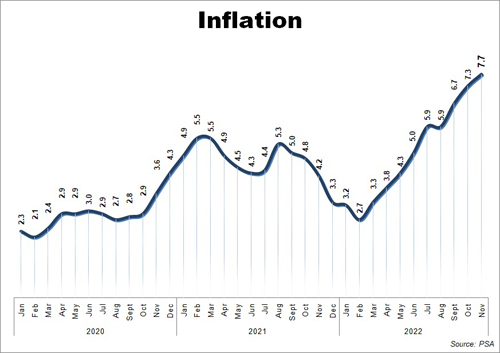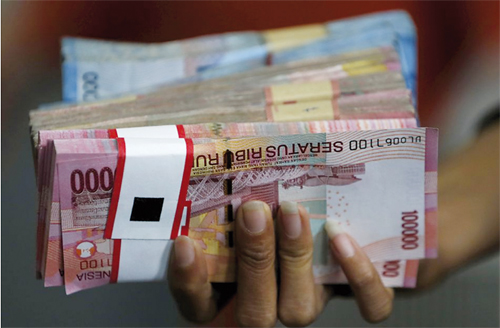In the Philippines, development financing institutions play a pivotal role in the quest for sustainable growth and development. And mandated to be the country’s development financial institution is the Development Bank of the Philippines (DBP).
The DBP, under its new charter, is classified as a development bank and may perform all other functions of a thrift bank. Its primary objective is to provide banking services principally to cater to the medium and long-term needs of agricultural and industrial enterprises with emphasis on small and medium-scale industries.
Tasked to lead DBP is Michael de Jesus, a prominent and seasoned banker. De Jesus was educated in the US and has extensive experience in corporate banking and finance.
Prior to his appointment as the ninth DBP President and CEO, he was a senior executive of several top-tier universal banks in the country–Rizal Commercial Banking Corporation (RCBC), Philippine National Bank (PNB), United Coconut Planters Bank (UCPB), and Citibank.
He graduated with a degree in Economics from Union College in Schenectady, New York, and earned his Masters in Business Administration (Finance) from The Wharton School, University of Pennsylvania.
Last week, de Jesus formally assumed his post and vowed to strengthen and expand DBP’s role in infrastructure financing to sustain the country’s growth momentum.
He said that the bank will work closely with the “National Government in expanding the country’s infrastructure development programtoraise the competitiveness of the local economy.”
“As I take the helm of DBP, it is with high hope and confidence that this bank will continue to boost and sustain our infrastructure push,” de Jesus said.
“Together with our stakeholders, we will ensure that DBP fulfills its mandate of developmental financing especially infrastructure development.”
De Jesus said DBP would remain active in financing high-growth sectors such as telecommunications and public infrastructure, as well as those that promote food security, agriculture modernization, sustainable energy, and economic inclusivity.
He said DBP would also pursue digitalization to increase customer touchpoints and enhance client engagement, adding that “… the bank will be more customer-centric to address the needs of its niche markets like local government units by leveraging on partnerships with established information technology (IT) providers and harnessing available and emerging IT applications…”
DBP is designated as the country’s Infrastructure Bank since 2017.
It is the eighth largest bank in the country in terms of assets and provides credit support to four strategic sectors of the economy — infrastructure and logistics; micro, small and medium enterprises; the environment; and social services and community development.
It has a network of 146 branches and branch-lite units, many of which are located in far-flung and underserved communities.
DBP’s history can be traced back during the Commonwealth when the early infrastructure for development financing was laid by the National Government.
In 1935, the National Loan and Investment Board (NLIB) was created to coordinate and manage government trust funds such as the Postal Savings Fund and the Teacher’s Retirement Fund.
Four years after, the Agricultural and Industrial Bank (AIB), which absorbed the functions of the NLIB, was created and started to harness government resources until the outbreak of war.
After the war, the government created the Rehabilitation Finance Corporation (RFC) under R.A. No. 85 which absorbed the assets and took over the functions of the AIB. The RFC provided credit facilities for the development of agriculture, commerce and industry and the reconstruction of properties damaged by the war.
In 1958, RFC was reorganized into DBP. The change in corporate name marked the shift from rehabilitation to broader activities.
With an initial capital of P500 million subscribed by the government, the DBP expanded its facilities and operations to accelerate national development efforts. This forward thrust saw the establishment of a network of branches throughout the country.
The DBP tapped both foreign and local fund sources to complement its capital resources. Credits were obtained directly from international financial institutions.
Congress broadened DBP’s powers in 1963 by increasing its capitalization to P2 billion and borrowing capacity to 10 times its paid-in capital and surplus. The lion’s share of funding goes to industries in need of support.
By 1969, DBP-funded projects continued to drive growth in several industries, accounting for 94 percent of the nation’s textile outputs, 90 percent of cement, 88 percent of steel, and 80 percent of all its pulp-mill capacity.
But the devaluation of the peso in 1970 caught DBP at a vulnerable time given its issuance of guarantees for dollar-denominated debts incurred by clients. With debts coming due, the bank cut down domestic lending operations and suspended almost all new guarantees. Nevertheless, DBP projects still created 10,465 new jobs.
In response to the economic slowdown, DBP shifted its focus to countryside development. Agricultural lending was directed toward food production, and industrial lending shifted focus to industries that generated more employment and utilized raw materials and agricultural products.
In 1973, DBP’s capitalization was increased from P2 billion to P3 billion through Presidential Decree 195. The bank joined five other agencies in organizing the Development Academy of the Philippines. Agriculture remained a top priority for DBP.
DBP in 1977 celebrated its 30th anniversary and was recognized as Southeast Asia’s largest development bank, with P16.7-billion in assets. In 30 years, the bank had lent out P11.9-billion to 419,533 borrowers. In partnership with the National Housing Authority, DBP also established a lending program for small businesses and homeowners.
By 1980s, DBP served as one of the primary conduits of funds in the National Government’s efforts to bail out many troubled corporations. Lending activities were suspended.
Affected by worldwide economic difficulties, a large number of DBP-financed projects failed to make payments and the acceptance of new loans remained suspended. DBP suffered a loss of P1.2-billion, a first in its 38-year history.
In 1986, former President Corazon Aquino issued Executive Order No. 81 which provided for the 1986 Revised Charter that called for a clean-up of DBP’s books, staff reorganization, and infusion of initial operating budget. The rehabilitation program restored the bank’s financial viability and DBP resumed lending operations.
With the transfer of non-performing assets together with liabilities on June 30, 1986 to the National Government, DBP implemented an institutional strengthening program covering a revision of the credit process and a training program for the implementation of new lending thrusts. The bank reopened its lending windows for housing, agriculture, and small and medium scale industries.
By 1990s, DBP was recognized as one of the World’s Top Ten Banks by The Banker. DBP was also ranked 11th in terms of overall leadership among top Philippine companies in the survey undertaken by the Far Eastern Economic Review in association with Citibank.
In 1998, former President Fidel Ramos signed Republic Act 8523 amending DBP’s 1986 Charter. Among the major provisions incorporated in the new DBP Charter were the increase of authorized capital stock from P5 billion to P35 billion, and the creation of the position of President and Chief Executive Officer.
The bank’s loan portfolio reached an all-time high of P79.3-billion in 2005. Out of the country’s top 10 banks, DBP ranked 7th in terms of assets and 4th in terms of net income performance.
Ten years after, largely fueled by loans, DBP’s total assets crossed the half-trillion mark at P504 billion. Branch banking operations were intensified especially in the countryside.
Three years ago, DBP joined the ranks of trillion-peso banks in the country, with total assets reaching P1.04-trillion.
These developments paved the way for the pursuit of other activities that allowed the Bank to fulfill its development mandate more meaningfully.
Today, DBP sharpens its development focus as the country’s Infrastructure Bank. DBP supports the National Government’s effort towards building a stronger and more resilient Philippine economy, through broader financial inclusion and sustainable infrastructure development.
Focusing on sectors with the biggest and most immediate impact on every Filipino’s well-being, DBP has put in place a comprehensive framework to spur progress in vital sectors of the economy focusing on four major areas — infrastructure and logistics; social services; micro, small and medium enterprises; and the environment.
With more than seven decades of committed advocacy as the country’s premier development financing institution, DBP has sharpened its development focus as the Philippines’ Infrastructure Bank. With this enhanced mandate, DBP more aggressively supports infrastructure development and inclusive growth.









